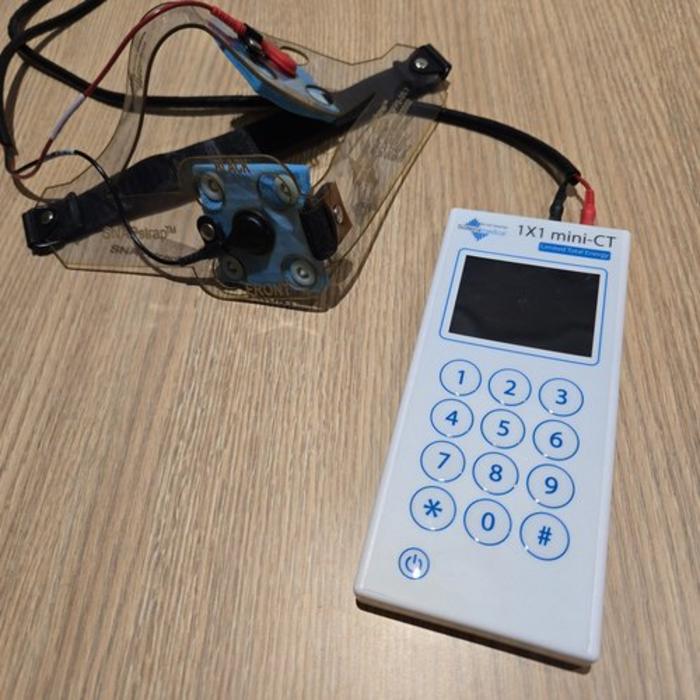Transcranial direct current stimulation (tDCS) has emerged as a compelling therapeutic approach in neuroscience, particularly for rehabilitative strategies for post-stroke patients. This non-invasive technique utilizes a low electrical current to modulate neuronal activity, creating a foundation for exploring its potential benefits in cognitive recovery. Recent research from Syracuse University’s Department of Communication Sciences and Disorders highlights new insights into how tDCS may influence attention and fatigue levels among stroke survivors suffering from post-stroke aphasia.
Aphasia, a language disorder caused by brain damage, presents significant challenges in rehabilitation following a stroke. Researchers embarked on a pilot study involving ten stroke survivors, each of whom had been diagnosed with aphasia. The average age of participants was 62.8 years, a demographic that underscores the urgent necessity for effective interventions as the population ages. The study’s unique design included two treatment sessions spaced at least three days apart, each carefully structured to assess the physiological and cognitive impacts of tDCS.
At the outset of each session, participants engaged in comprehensive attention assessments, during which researchers monitored brain activity through electroencephalography (EEG) alongside pupil diameter measurements. The synchronous tracking of EEG and pupil size provided an innovative method to gauge the cognitive and neural shifts elicited by tDCS. Subsequently, participants underwent attention-training exercises, receiving either genuine stimulation or a placebo variant, before repeating the initial assessments to evaluate changes in attention and cognitive functioning.
The findings from this pilot study were intriguing yet complex. While the pupil dilation measurements indicated heightened activation of the locus coeruleus-norepinephrine (LC-NE) pathway—an essential brain system associated with attention—actual improvements in attention scores did not follow suit. This discrepancy raised questions about the efficacy of single-session tDCS applications, suggesting that enhanced attention may necessitate a broader treatment regimen involving multiple sessions for significant results.
One notable discovery was the reduced perception of fatigue reported by participants who received authentic tDCS compared to those who experienced the placebo. This aspect bears significance for rehabilitation strategies, as excessive fatigue can hinder the recovery process in stroke patients. As the participants evaluated their fatigue levels on a scale from zero to 100 before and after sessions, the clear divergence in reported fatigue reinforces the potential of tDCS to influence subjective experience, showcasing its promise not just for cognitive function but also for overall quality of life.
Hannah Rembrandt, the first co-author of the study and a Ph.D. student at the Syracuse University Aphasia Lab, stressed the importance of improving attention among stroke survivors. Enhanced attention could cascade into improvements in other critical cognitive domains such as memory, language proficiency, and executive functioning, thus fundamentally altering the rehabilitation landscape for these individuals. Rembrandt’s insights emphasize that attention is a cornerstone of cognitive rehabilitation, and its enhancement can have wide-ranging effects on recovery.
However, the study’s outcome was not unequivocal. Despite the promising physiological indicators, the lack of measurable advancement in attention tasks following the treatment suggests a necessity for deeper exploration into the parameters of tDCS application. Researchers hypothesize that the number of treatment sessions might significantly affect outcome efficacy. This hypothesis aligns with other research indicating that multiple sessions yield more potent effects, underscoring the need for methodological refinements in future studies.
The complexity of brain functioning post-stroke requires a nuanced understanding. Stroke alters neural pathways and can lead to deficits that complicate recovery, necessitating innovative approaches such as tDCS. By delivering targeted stimulation to specific brain areas, tDCS offers a vehicle for potential neuroplasticity—the brain’s inherent ability to reorganize and form new connections. This critical potential suggests that, if effectively harnessed, tDCS might not only alleviate symptoms but possibly contribute to more profound recovery strategies.
Future research expanding upon this pilot study is imperative. To yield actionable insights, the scientific community must further investigate how different protocols and parameters might influence the efficacy of tDCS in stroke rehabilitation. Variables such as stimulation duration, intensity, and the specific cognitive tasks used during treatment warrant careful examination to ensure that tDCS can be optimized for therapeutic use.
Moreover, the intersection between physiological indices—like pupil dilation—and cognitive outcomes presents a fascinating avenue for exploration in its own right. Establishing reliable biomarkers for cognitive engagement in response to treatments could revolutionize monitoring and tailoring rehabilitation strategies. The correlational data gathered through EEG and pupil assessments ought to be leveraged in subsequent research to knit together the intricate tapestry of cognition and physiological response.
As the research progresses, it will be crucial to maintain an interdisciplinary dialogue incorporating neurology, psychology, and rehabilitation sciences. Collaborative efforts will aid in developing consistent frameworks for operationalizing tDCS effectively in clinical settings. Understanding how tDCS fits within a larger rehabilitative paradigm will not only enhance the quality of therapeutic interventions but may also enlighten broader inquiries into cognitive recovery post-injury.
In conclusion, the pilot study conducted by Syracuse University serves as a landmark exploration into the potential of tDCS for addressing attention and fatigue in post-stroke patients. It provides a crucial stepping stone toward understanding the intricacies of cognitive rehabilitation and the neurophysiological change achievable through innovative treatment modalities. The promise shown, particularly concerning fatigue reduction, could pave the way for tDCS to be a reliable tool in enhancing quality of life and cognitive recovery for stroke survivors in the future. Continued research will be pivotal as we seek to unravel the complex relationships among brain function, recovery, and innovative treatments like tDCS.
Subject of Research: Transcranial direct current stimulation (tDCS) effects on attention and fatigue in post-stroke patients.
Article Title: Evidence of physiological changes associated with single-session pre-frontal tDCS: a pilot study.
News Publication Date: 24-Feb-2025.
Web References: https://www.frontiersin.org/journals/human-neuroscience/articles/10.3389/fnhum.2025.1549248/full
References: Frontiers in Human Neuroscience.
Image Credits: Credit: Syracuse University.
Keywords: Brain stimulation, Human brain, Aphasia, Human physiology, Neurological disorders, Brain injuries, Communications.




